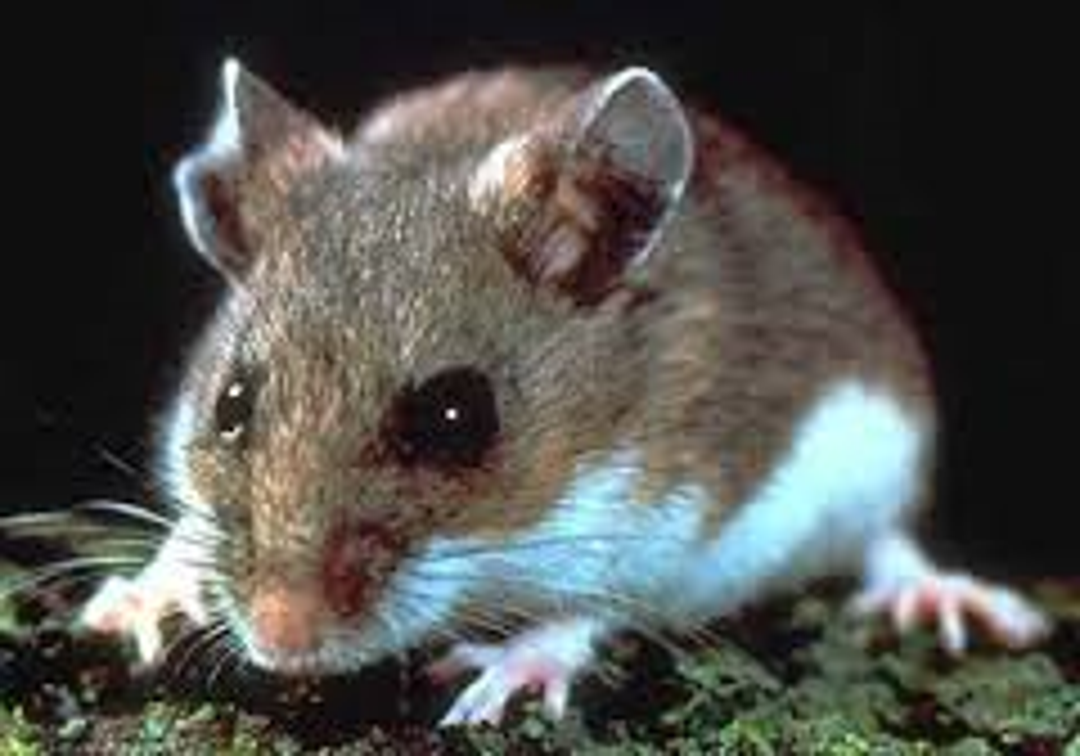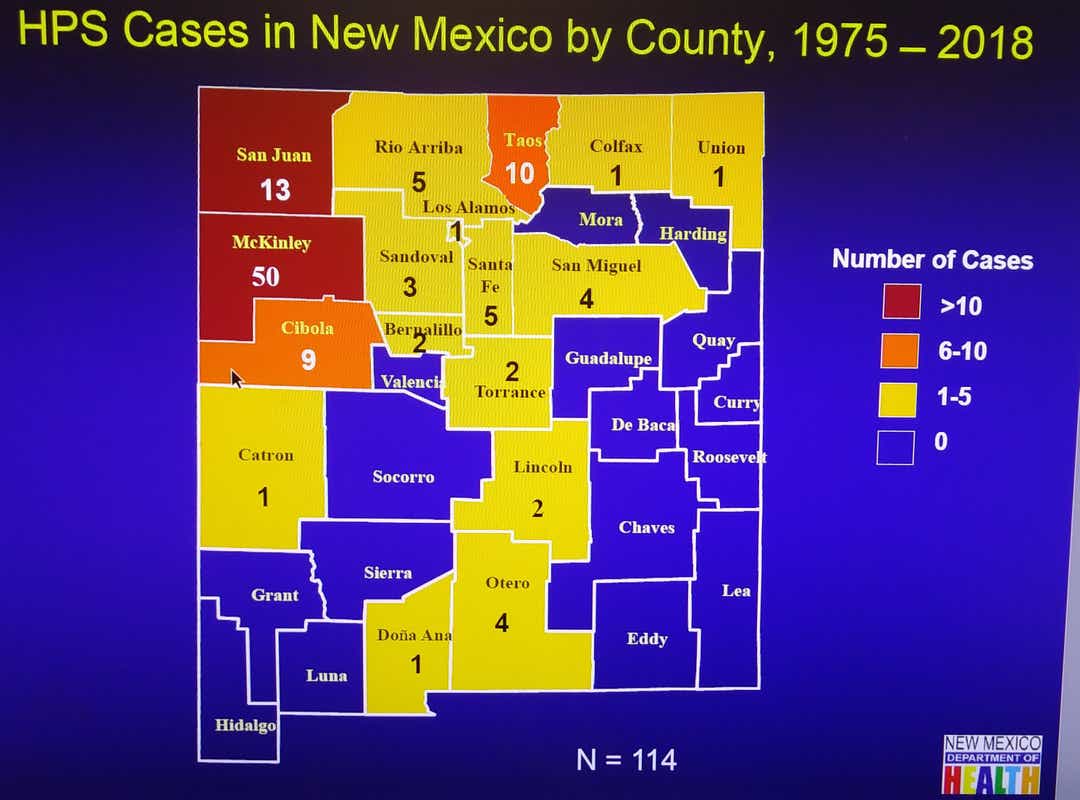There came a new virus called hantavirus CDC it comes Transmitted from mice
McKinley County woman dies of Hantavirus
New deadly virus kicks off from China this time from mice ...
One person died in Yunnan province, China, as a result of the new Hanta virus transmitted from mice to humans, according to China's Global Times.
It causes both pulmonary and renal effects.
New deadly virus kicks off from China this time from mice ...
One person died in Yunnan province, China, as a result of the new Hanta virus transmitted from mice to humans, according to China's Global Times.
It causes both pulmonary and renal effects.
Dianne L. Stallings Ruidoso News
Updated 2:53 AM EST Dec 13, 2019
A 42-year-old McKinley County woman died from Hantavirus Pulmonary Syndrome (HPS), officials with the New Mexico Department of Health reported this week.

The fatality is the second case of HPS confirmed in New Mexico in 2019, and the first death.
The woman's name was not released, but the state Department of Health said it completed an environmental investigation at the woman’s home to help reduce risk to others.
New Mexico reported a total of 114 HPS cases with 49 deaths between 1975 and 2018, according to statistics from the state health department.
Two cases were reported in Lincoln County during that time period, four in Otero County, one in Doña Ana County. No cases were reported in Eddy, Lea and Chaves counties.
State health officials reported a case of HPS last month in another McKinley County woman, who survived. In 2017, there were five cases of HPS in New Mexico and no cases in 2018.
Cases of hantavirus per state
Courtesy/CDC
What is Hantavirus?
Hantavirus Pulmonary Syndrome is a severe, respiratory disease in humans that is fatal in about 40 percent of cases.
In New Mexico, the deer mouse is the main carrier for Sin Nombre virus, the hantavirus strain, that can be transmitted by infected rodents through urine, droppings or saliva that contain the microscopic virus, the release stated.

People can contract the disease when they breathe in virus that is suspended in the air, but it is not contagious from one person to another.
“We urge New Mexicans to be mindful when they are opening up sheds, cabins, and other buildings that have been closed up as mice and other rodents may have moved in,” said Department of Health Secretary Kathy Kunkel.
“Stirring up dust in areas where rodents hang out – that includes everything from nests to droppings - can cause the virus to get into the air where the particles can be breathed in. It’s best to air out cabins and sheds before entering them and wet down droppings with a disinfectant.”
Hantavirus disease surveillance in the United States began in 1993 during an outbreak of severe respiratory illness in the Four Corners region, according to the Centers for Disease Control and Prevention. HPS became a nationally notifiable disease in 1995, and is now reported through the Nationally Notifiable Disease Surveillance System when fever is present in a patient with laboratory-confirmed evidence of Hantavirus infection.
In 2014, the Council of State & Territorial Epidemiologists expanded the national reporting of laboratory confirmed Hantavirus infections to include HPS and non-pulmonary Hantavirus infection. Reporting of non-pulmonary Hantavirus cases began in 2015.
State health officials encouraged healthcare providers and the public to become familiar with the signs of Hantavirus infection.

One of the main culprits for spreading the infection is the deer mouse.
Courtesy
Symptoms
Early symptoms include fever and muscle aches, possibly with chills, headache, nausea, vomiting, diarrhea and abdominal pain and cough which rapidly progresses to respiratory distress.
The signs typically develop within one to six weeks after rodent exposure, state health officials said. Although there is no specific treatment for HPS, chances for recovery are better if medical attention is sought early.
Patients are encouraged to tell their provider if they have had an exposure to rodents, their nests or droppings within the two months prior to their illness.
Prevention
Air out closed-up buildings, storage rooms, trailers, cabins and overwintered vehicles before entering.
Trap mice until they are all gone.
Soak down rodent nests and droppings using a disinfectant before cleaning up.
Don’t sweep rodent droppings into the air where they can be inhaled.
Put hay, wood, and compost piles as far as possible from your home.
Get rid of trash and junk piles to reduce attracting rodents.
Don’t leave your pet’s food and water where mice can get to it.
Number of hantavirus cases per county in New Mexico
Courtesy/New Mexico Department of Health
More: Two hantavirus cases reported in McKinley County
More: Death from Hantavirus reported in New Mexico
For more information, visit the Hantavirus Pulmonary Syndrome section of the New Mexico Department of Health website at https://nmhealth.org/.
Updated 2:53 AM EST Dec 13, 2019
Hantaviruses are a family of viruses spread mainly by rodents and can cause varied disease syndromes in people worldwide. Infection with any hantavirus can produce hantavirus disease in people. Hantaviruses in the Americas are known as “New World” hantaviruses and may cause hantavirus pulmonary syndrome (HPS). Other hantaviruses, known as “Old World” hantaviruses, are found mostly in Europe and Asia and may cause hemorrhagic fever with renal syndrome (HFRS).
Each hantavirus serotype has a specific rodent host species and is spread to people via aerosolized virus that is shed in urine, feces, and saliva, and less frequently by a bite from an infected host. The most important hantavirus in the United States that can cause HPS is the Sin Nombre virus, spread by the deer mouse.
Mice control team works in Ganzi, Southwest China's Sichuan Province to examine the population of the rodent and test whether they carries plague bacteria in September 2019. Photo: VCG
What should be known about hantavirus case in China amid COVID-19 pandemic?
A hantavirus case reported in China amid the coronavirus pandemic has sparked interest online.
A migrant worker from Lincang, a city in Southwest China's Yunnan Province, died suddenly on Monday when passing through Ningshan, Northwest China's Shaanxi Province, on the journey back to work. The worker tested positive for the hantavirus and negative for COVID-19.
No hantavirus cases were reported previously and an investigation has been launched to cope with the case, according to the Xinhua News Agency, citing a circular released on Tuesday by the local health commission in Lincang.
The city has swiftly started monitoring and screening for the disease and an epidemiological investigation is being conducted. A special team has been dispatched to Ningshan county for a response, per the circular by the local health commission.
An earlier circular by Ningshan county said that the migrant worker whose surname was identified as Tian, a staffer with an aquatic food company in East China's Shandong Province, felt indisposed when passing through the county and died after all rescue measures failed at 7am on Monday.
Samples of an additional two people with fever and other people accompanying Tian were submitted for testing.
Patients infected with hantavirus will show symptoms including fever, bleeding and kidney damage, Chinese media reports said, citing infectious disease experts with the Chinese Center for Disease Control and Prevention.
The incubation period of the hantavirus is usually seven days to two weeks, with rare cases showing symptoms as short as four days or as long as two months. Early symptoms include exhaustion, vomit and reddish cheeks.
Humans can contract the hantavirus from infected rodents, from either rural areas or a domestic environment such as pet rodents. Humans can also contract it from aerosols from a rodent's feces or urine or via contact with the eyes, nose or mouth. Humans can also be infected by a bite by infected rodents.
There has been no direct person-to-person transaction so far reported, according to media reports.
In China, vaccines for the hantavirus have been on the market for nearly 20 years, and taking vaccines is seen as the most effective way to prevent hantavirus infection. Immunological studies have shown a protection rate of 92 percent six years after fundamental immunology, suggesting most people do not need a second vaccine shot for the hantavirus, media reports said.
China has mandated vaccine programs for the hantavirus in high-risk regions and groups since 2008.
https://www.globaltimes.cn



















.jpg)









































Inga kommentarer:
Skicka en kommentar